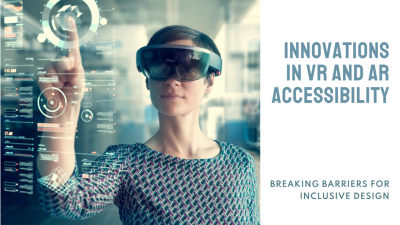The digital landscape is undergoing a profound transformation. Computer vision, edge computing, and quantum computing are no longer isolated technologies but increasingly interconnected pillars shaping our technological future. Businesses that understand this convergence gain significant competitive advantages in their respective industries.
Computer vision has evolved from simple image recognition to sophisticated real-time analysis systems that interpret complex visual data almost instantaneously. Meanwhile, edge computing brings processing power closer to data sources, reducing latency and enabling faster decision-making. Quantum computing introduces an entirely new computing paradigm that promises to solve previously intractable problems.
Computer Vision: Beyond Simply Seeing
Computer vision technology has matured substantially over the past decade. Modern systems can identify objects, recognize faces, track movement, read text, and understand spatial relationships with remarkable accuracy. These capabilities extend far beyond academic interest—they drive practical applications across industries.
Healthcare professionals now use computer vision to analyze medical images and identify potential issues that might escape human detection. Manufacturing facilities employ vision systems to inspect products at speeds and accuracy levels impossible for human workers. Retailers analyze customer movement patterns to optimize store layouts and improve shopping experiences.
The technology works by processing and analyzing digital images through multiple computational layers that extract increasingly abstract features. Early layers might detect edges and simple shapes, while deeper layers identify complex objects and their relationships. This process mirrors aspects of human visual cognition but can operate continuously without fatigue.
Edge Computing: Intelligence at the Source
Traditional cloud computing architectures face growing challenges as data volumes expand exponentially. Transmitting every piece of information to centralized data centers creates bandwidth bottlenecks and introduces latency that many modern applications cannot tolerate.
Edge computing addresses these challenges by moving processing power closer to where data originates—at the network edge. This architectural shift enables real-time analysis for critical applications like autonomous vehicles, industrial automation, and smart city infrastructure.
A self-driving car cannot afford the delay of sending sensor data to a remote server before deciding whether to brake. Similarly, a smart factory needs immediate analysis of production line anomalies before defects multiply. Edge computing makes these scenarios possible by providing computing resources precisely where and when they’re needed.
The benefits extend to our comprehensive digital marketing solutions, where real-time data processing enables instantaneous customer insights and personalized experiences.
Quantum Computing: Reimagining Possibility
While computer vision and edge computing represent evolutionary advances in existing paradigms, quantum computing introduces a revolutionary approach to computation itself. Classical computers process information in bits (0s and 1s), but quantum computers use quantum bits or qubits that can exist in multiple states simultaneously through a property called superposition.
This fundamental difference enables quantum computers to explore multiple solution paths concurrently rather than sequentially. For certain problems, this provides exponential speed improvements over classical computing methods.
Quantum computing holds particular promise for complex optimization challenges, materials science, drug discovery, and cryptography. While fully practical quantum computers remain in development, early quantum systems are already demonstrating capabilities beyond classical supercomputers for specific tasks.
The Convergence Point
The true power of these technologies emerges at their intersection. Computer vision systems generating massive data volumes benefit from edge computing’s ability to process information locally. Both technologies will eventually leverage quantum algorithms to tackle their most challenging computational problems.
Consider autonomous drone systems that combine all three technologies: computer vision for environmental awareness, edge computing for real-time decision making, and quantum-inspired algorithms for optimal route planning. Such systems represent not merely incremental improvements but fundamentally new technological capabilities.
Looking Forward
Organizations preparing for this technological convergence should consider several key strategies:
Invest in foundational data infrastructure that can support these advanced technologies. Quality data remains the essential fuel for any computational system.
Develop cross-disciplinary teams that understand both the technical aspects and practical business applications of these technologies.
Start with focused pilot projects that deliver measurable value while building organizational capabilities.
The businesses that successfully navigate this convergence will likely define the next generation of industry leaders. The transformation is not merely technical but fundamentally changes how organizations operate and deliver value.
The future belongs to those who recognize that computer vision, edge computing, and quantum computing are not separate technological threads but increasingly interwoven strands of a new technological fabric.





